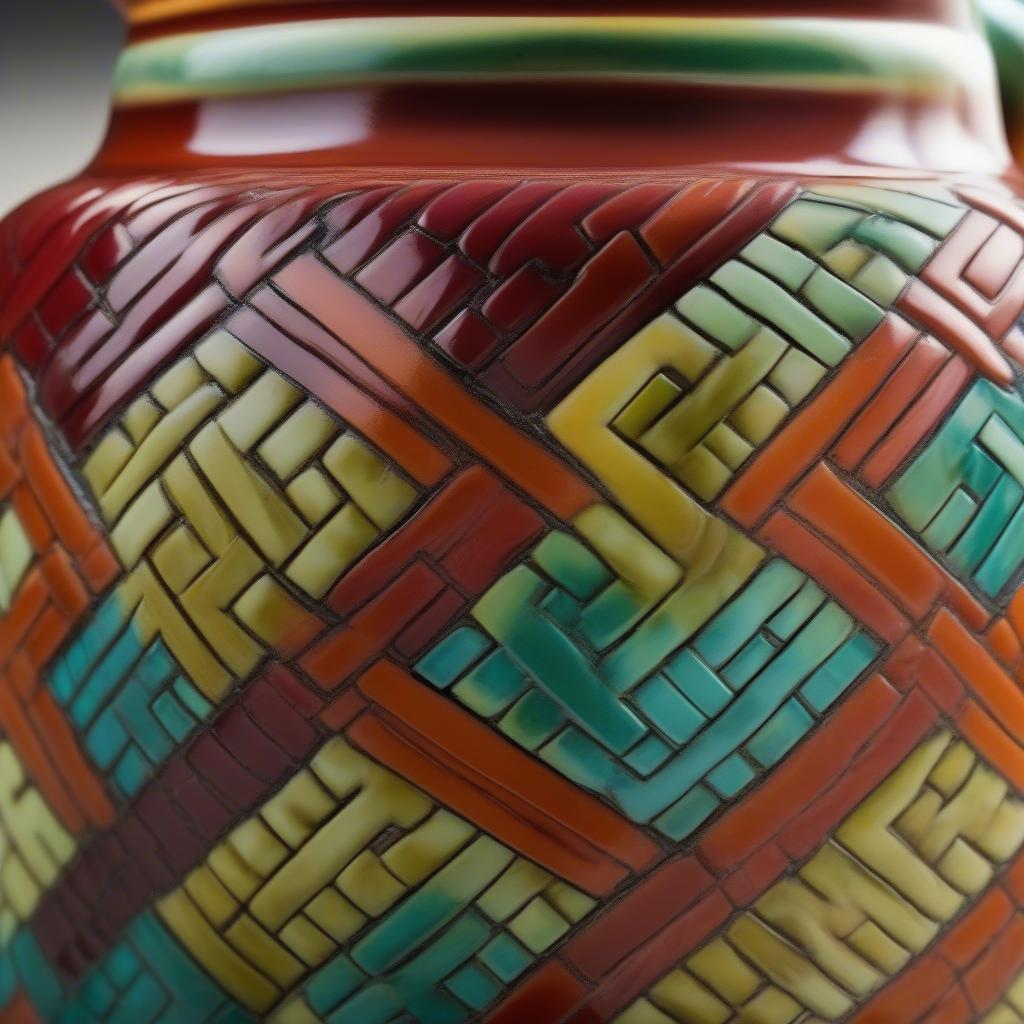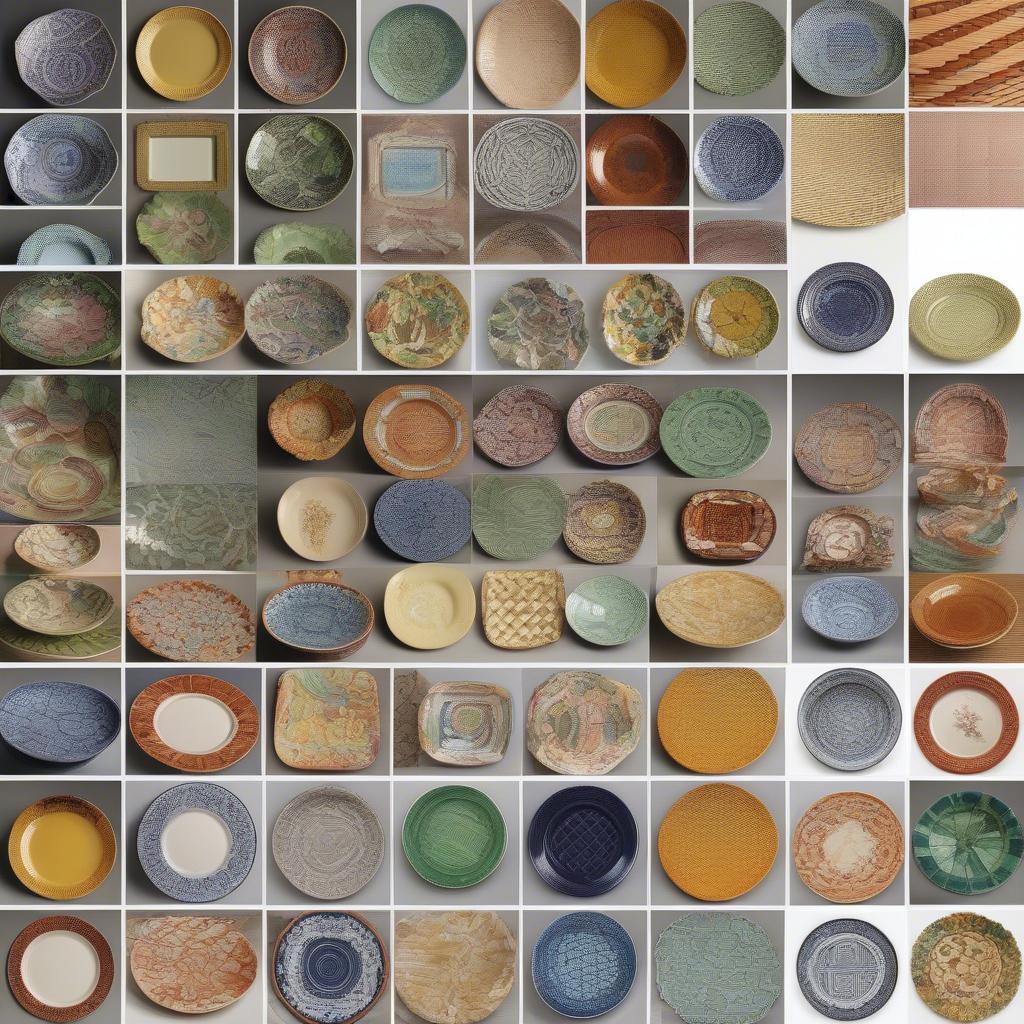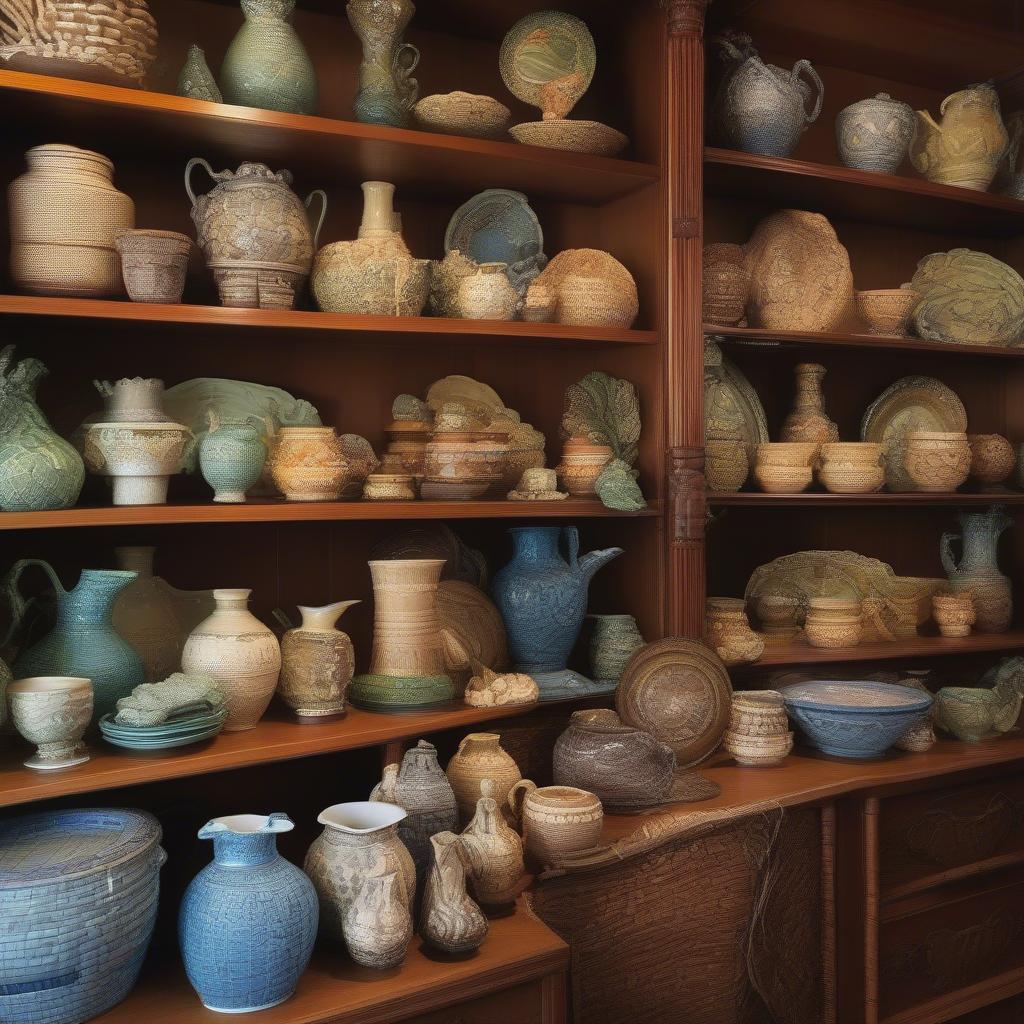Basket Weaving
Majolica Basket Weave: A Deep Dive into Intricate Pottery
Majolica Basket Weave is a captivating style of pottery that blends artistry and functionality. This article explores the fascinating world of majolica basket weave, covering its history, identifying key characteristics, and providing valuable insights for collectors and enthusiasts alike.  Antique Majolica Basket Weave Pitcher We’ll unravel the intricate details of this unique ceramic art form.
Antique Majolica Basket Weave Pitcher We’ll unravel the intricate details of this unique ceramic art form.
Understanding the Majolica Basket Weave Design
Majolica, known for its vibrant glazes and detailed designs, often features the charming basket weave pattern. This pattern mimics the interwoven structure of a basket, adding a touch of rustic elegance to the pieces. The basket weave design can be found on a wide range of majolica items, from pitchers and plates to bowls and decorative figures. The pattern’s versatility allows it to complement various styles, adding a touch of nature-inspired artistry to any collection. What makes majolica basket weave so appealing? It’s the combination of the tactile quality of the weave pattern and the rich, often contrasting, majolica glazes.
 Different Styles of Majolica Basket Weave Plates
Different Styles of Majolica Basket Weave Plates
One specific type of majolica that exemplifies this pattern beautifully is the majolica basket weave plate. The raised texture of the basket weave design creates a three-dimensional effect, enhancing the visual and tactile experience.
Identifying Key Characteristics
How can you identify genuine majolica basket weave? Look for the distinct textured surface, mimicking woven strands. The glaze should be thick and glossy, often featuring vibrant colors. Additionally, check for the maker’s mark, which can help authenticate the piece and provide information about its origin. Keep in mind that antique majolica pieces may show signs of crazing, a network of fine cracks in the glaze, which is considered a natural characteristic of aging and adds to the charm of the piece.
The History of Majolica Basket Weave
Majolica pottery has a rich history dating back to the Middle Ages. The term “majolica” originally referred to tin-glazed earthenware produced on the Spanish island of Majorca. The technique later spread throughout Europe, and by the 19th century, majolica production flourished, especially in England and the United States. majolica aesthetic movement yellow basket weave pitcher are beautiful examples of this era. The basket weave motif became a popular design element, reflecting the Victorian era’s fascination with nature and handcrafted objects.
What Era Did Majolica Basket Weave Originate?
While basket weave patterns have existed in pottery for centuries, the majolica basket weave gained popularity during the Victorian era, particularly in the late 19th century. This period saw a surge in the production of majolica ware, with the basket weave becoming a prominent decorative element.
 Collection of Antique Majolica Basket Weave Pieces
Collection of Antique Majolica Basket Weave Pieces
Caring for Your Majolica Basket Weave
Majolica basket weave, while durable, requires careful handling and cleaning. Avoid using abrasive cleaners or scrub brushes, which can damage the glaze. Hand washing with mild soap and warm water is recommended. When drying, avoid placing the pieces directly on hard surfaces, as this can cause chipping. A soft cloth or towel is ideal.
“Majolica, particularly pieces with the basket weave design, are a testament to the artistry of the past. Proper care ensures these beautiful objects continue to be admired for generations to come,” says Dr. Eleanor Vance, an expert in ceramic arts and historical preservation.
Collecting Majolica Basket Weave
For those interested in collecting majolica basket weave, several factors should be considered. The condition of the piece is crucial, as chips, cracks, or significant wear can impact its value. The rarity of the design and the maker’s reputation also play important roles. Researching different manufacturers and identifying specific marks can help collectors assess the authenticity and value of their finds. Examples like the basket weave blackberries leaves majolica are highly sought after by collectors.
Where Can I Find Majolica Basket Weave?
Antique shops, online marketplaces, and specialized majolica dealers are excellent sources for finding majolica basket weave pieces. Auction houses can also offer rare and valuable items for serious collectors.
“The thrill of discovering a unique majolica piece, especially one with the intricate basket weave pattern, is unparalleled. It’s like finding a hidden treasure from the past,” shares Mr. James Cartwright, a seasoned majolica collector. The basket weave blackberries leaves majolica sugar bowl is a prime example of this allure.
Conclusion
Majolica basket weave offers a delightful blend of artistry and practicality. Its intricate design, vibrant glazes, and historical significance make it a captivating collectible. From pitchers and plates to more unique pieces, majolica basket weave adds a touch of timeless elegance to any collection.
FAQs
- What is majolica basket weave? Majolica basket weave refers to pottery decorated with a raised, interwoven pattern resembling a woven basket.
- How do I clean majolica basket weave? Hand wash with mild soap and warm water, avoiding abrasive cleaners.
- Is majolica basket weave valuable? The value depends on factors like condition, rarity, and the maker.
- Where can I find majolica basket weave for sale? Antique shops, online marketplaces, and specialized dealers are good places to start.
- What are some common majolica basket weave patterns? Besides the classic weave, variations like open weave and ribbed weave exist.
- How can I tell if majolica is antique? Look for maker’s marks and signs of age like crazing.
- What are some popular majolica manufacturers? Minton, Wedgwood, and George Jones are renowned names.
Do you have more questions or need expert advice on Majolica? You can explore additional articles on our website covering majolica pitcher and plate variations.
If you require assistance, please contact us at Hanoi, Vietnam or Tech Avenue, Suite 12, San Francisco, CA 94105, USA. We offer 24/7 customer support.
